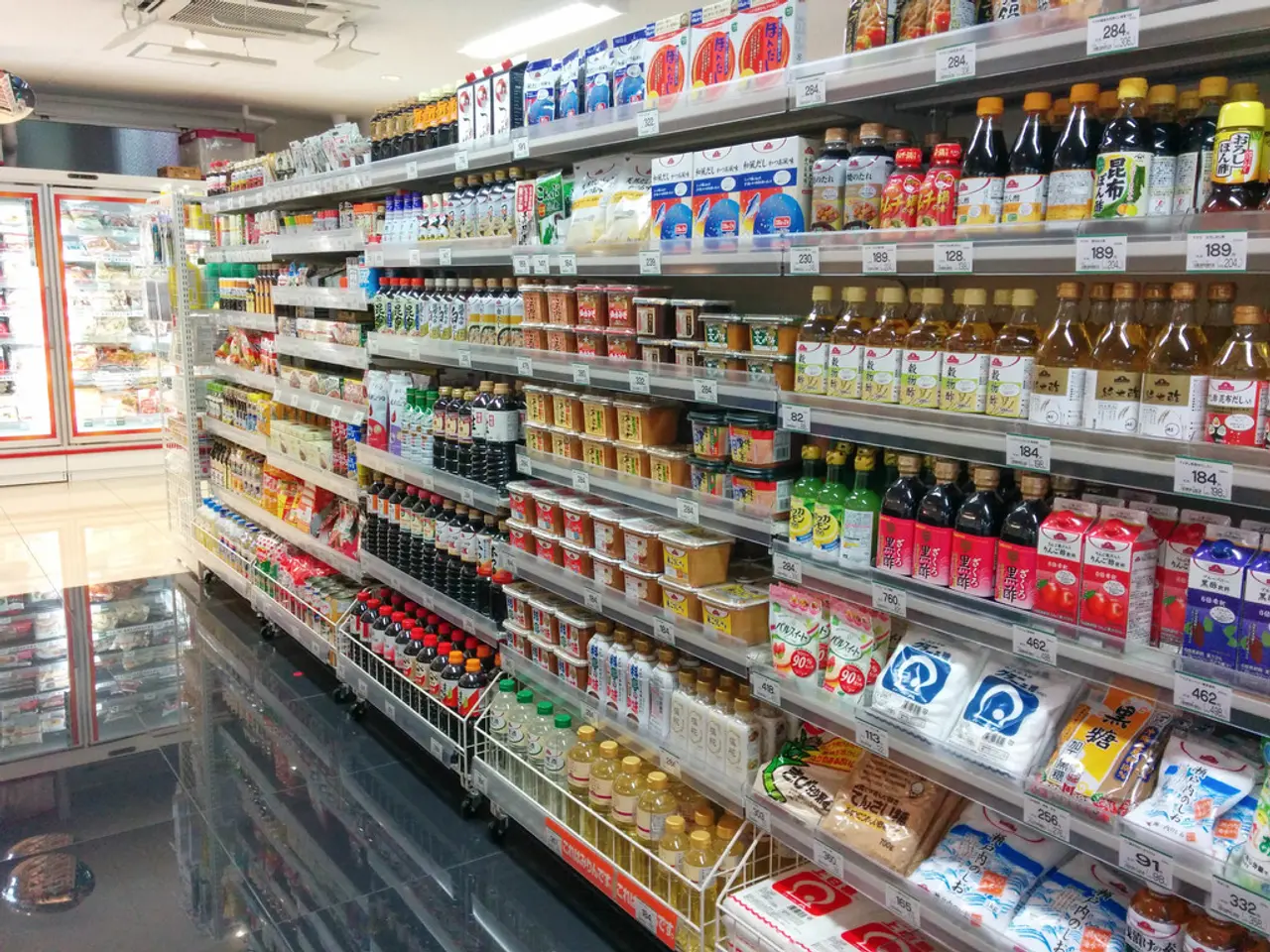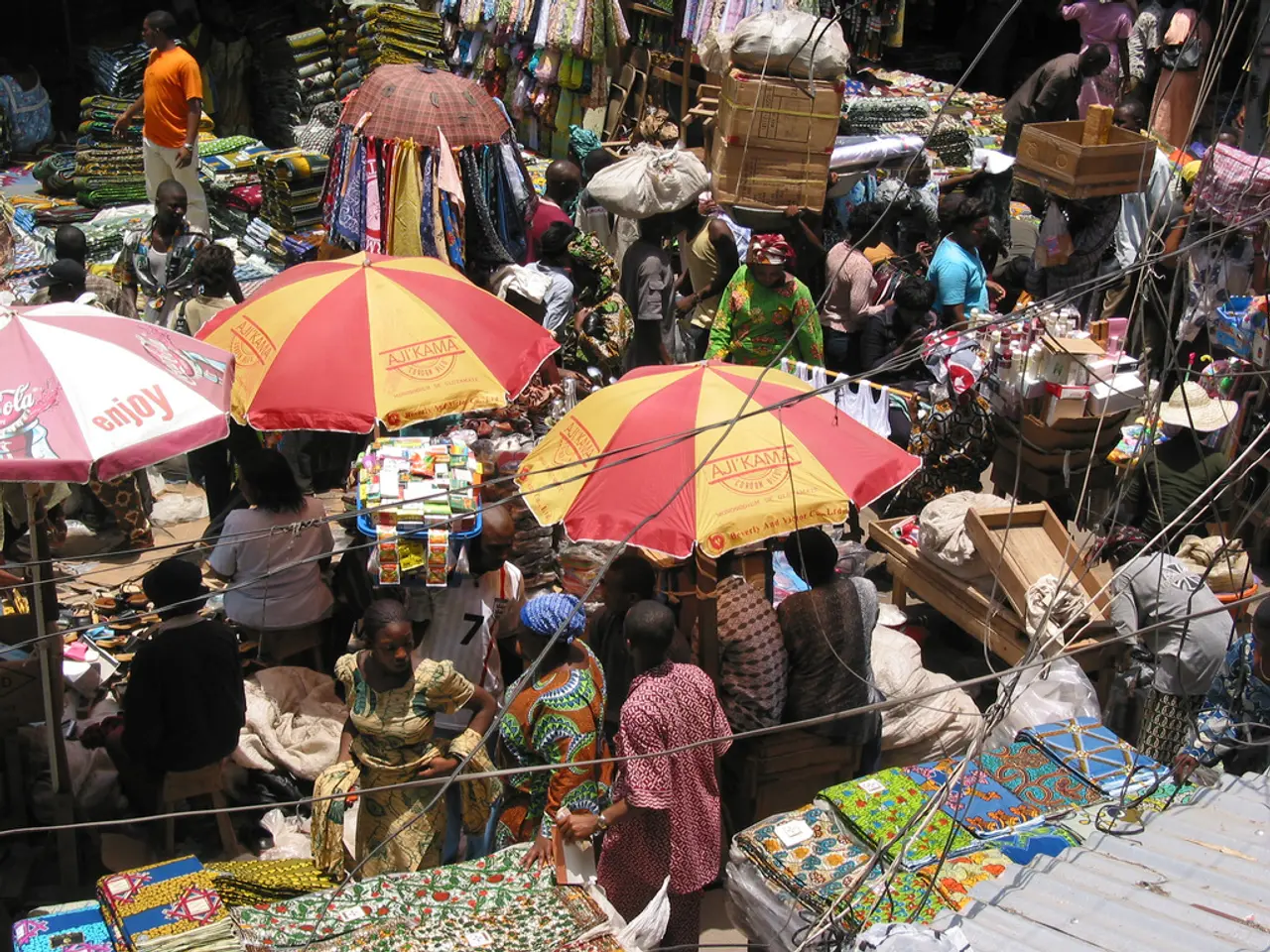Unprecedented price drops leave independent merchants disheartened - Retailers Find Significant Excitement in The Big Discount Phenomenon
In 2025, Germany's economy is projected to make a modest comeback after a period of contraction, with a forecasted growth of 0.3% to 0.4%, according to leading economic research institutes such as ifo, Kiel Institute for the World Economy, and Halle Institute for Economic Research [1][2][3][4]. However, the recovery remains fragile and is influenced by external risks such as U.S. trade policy.
This economic context has several implications for the retail sector, consumer behaviour, and online shopping trends. As the economy recovers gradually, retail sales growth remains cautious, with retailers likely to experience moderate demand rather than strong spikes.
Consumers, facing high living costs and economic uncertainty, are becoming more price-sensitive and selective about their spending. There may be greater emphasis on discounts, promotions, and value brands as consumers seek to maintain their budgets without sacrificing essentials. The preference for experiences and convenience may continue to shape spending, but budget constraints could temper discretionary spending.
Orange juice, minced beef, berries, and chocolate, among other goods, have seen significant price increases in May compared to the previous year, with some items, such as berries, increasing by 14 percent and the average cost of a bar of chocolate rising by 28 percent [5]. These price hikes are causing many people in Germany to pay closer attention to their money and noticeably cut back on spending [6].
Despite the economic headwinds, online retail is expected to continue growing, driven by convenience, a broader product range, and competitive pricing. There may be a shift towards more price comparison and bargain hunting online, with consumers using digital platforms to find the best deals. Retailers will likely invest further in omnichannel strategies, integrating physical stores with online sales to capture both convenience- and experience-oriented shoppers.
Many retailers started the year with high hopes but have been disappointed so far, with nearly three-quarters of retailers reporting a decrease in customer frequency in their stationary stores over the past two years [7]. About a third of the sales growth that the online trade could achieve in the first half of the year was generated by Asian shopping portals such as Temu, Shein, and AliExpress [8].
Just as many are afraid they won't be able to maintain their standard of living, and half of the surveyed individuals feel strongly unsettled by the economic crisis [9]. Nearly 80 percent of consumers are paying more attention to prices and offers [10]. As a result, many consumers can only afford to buy in the entry-level segment and are buying fewer premium brands [11].
In summary, the economic crisis in Germany in 2025 leads to a cautious but slowly improving retail environment. Consumer behaviour reflects restrained spending focused on value and essentials, while online shopping continues to expand as a preferred channel for price-conscious buyers. The retail sector must navigate these mixed signals by balancing cost control with innovation in digital commerce, preparing for a stronger rebound in 2026 as forecasts predict improved growth conditions [1][2][3][4].
- Given the economic recovery's fragility in Germany, various employment policies could be enacted to aid workers, particularly in the retail sector, as they face moderate demand and increasing living costs.
- With the growth of online retail in Germany, industry, finance, and other business sectors may need to review their employment policies to adapt to the changing retail landscape, embracing digital technologies for pricing, inventory management, and customer service in order to stay competitive.




